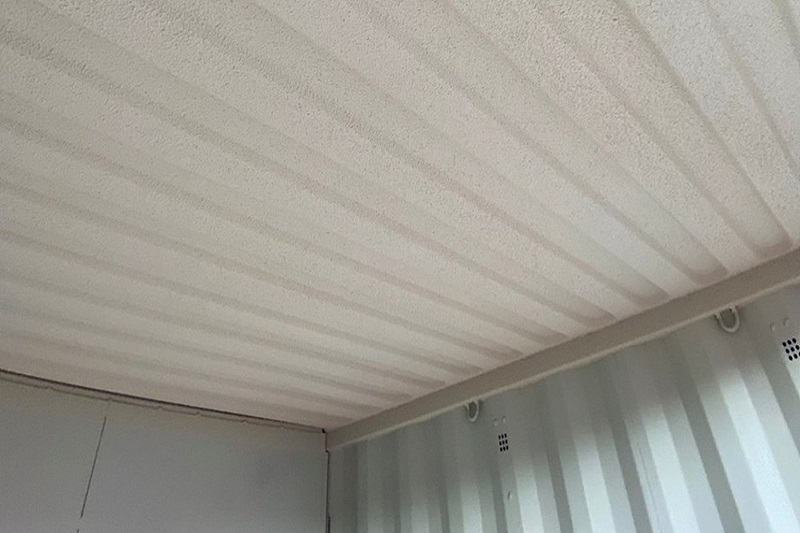Is condensation in your shipping container causing damage to your valuable items? Have traditional solutions been ineffective or too expensive to implement? If you're looking to delve into innovative methods for combating this often overlooked, but serious problem, you’ve come to the right place!
Shipping container condensation can cause significant problems, impacting the integrity of your container and the goods stored within it. The good news? We are in an age where designers and experts are utilizing innovative technology and design approaches to get a grip on this issue.
This article gets under the skin of container condensation and guides you towards some groundbreaking solutions. We will look beyond simplistic and impractical answers, instead, diving into the material science, building design, and technological innovations that can help manage this persistent problem.

The Root Cause: Why Does Condensation Occur in Shipping Containers?
First, let's understand why this problem occurs. Condensation in shipping containers primarily happens due to temperature differences inside and outside the container. When warm, humid air comes into contact with the cold interior surface of the container, it cools down and loses its capacity to hold moisture, leading to shipping container condensation.
Many factors contribute to these temperature variances, including geographical location, time of year, and the nature of the goods stored inside. External weather conditions also play a critical role. For example, on a sunny day, the container can heat up rapidly, creating a ‘greenhouse’ effect.
Game-Changing Solution: Insulation Materials
Combating shipping container condensation is more than just about applying a quick fix. It's about rethinking the design and choice of materials to ensure a holistic solution. A key factor here is insulation. Insulation materials can reduce the temperature fluctuations inside the container and therefore, decrease condensation.
But, what type of insulation to choose? Reflective foil (also known as radiant barrier), foam board, and spray foam are all effective and innovative choices. More experimental possibilities include using phase change materials (PCMs), which can store and release thermal energy during the heating and cooling process.
Ventilation Systems: A Breath of Fresh Air
Another vital component to consider is the ventilation system. Good ventilation can help maintain consistent temperatures and decrease humidity levels inside the container. A well-planned ventilation system can disperse heat before it has a chance to create internal shipping container condensation.
One revolutionary idea that is gaining traction is solar-powered ventilation. This system uses fans powered by solar energy to keep air circulating throughout the day, helping to maintain an optimal temperature.
Desiccants: An Old Solution with New Potential
Desiccants, materials that absorb moisture in the air, are not new. But how we use them is changing. Traditional desiccants like silica gel can still be useful in small areas, but for a large shipping container, we need something more potent.
Enter the era of calcium chloride desiccants. These innovative products can absorb substantially larger amounts of moisture from the air, reducing shipping container condensation dramatically and protecting goods from damp and rust.
Ensuring Proper Loading: Thinking Inside the Box
This is not about materials or gadgets but a simple yet effective change in procedure. Ensure the items are dry before being stored, and they are not pressed against the walls of the container. Maintaining some space allows air to circulate freely, reducing the likelihood of shipping container condensation.

Dealing with the Cost: Is It Worth It?
Let's face it, the initial costs of implementing these solutions can be high. But when compared to the potential loss and damage due to unchecked shipping container condensation, the need for these measures becomes clear. In the end, protecting your assets with these innovative solutions will not only save you money but also give you peace of mind.
Conclusion
The persistent problem of shipping container condensation in shipping containers now has promising and creative solutions. By understanding the causes and implementing innovative measures such as advanced insulation, efficient ventilation, effective desiccants, and careful loading practices, we can significantly reduce shipping container condensation and its destructive effects.
While there is no one-size-fits-all solution, this multifaceted approach allows for customization based on container use, location, and seasonal variance. Yes, these strategies come with initial costs, but the long-term benefits and savings far outweigh the early expenses. After all, isn't it better to weather the storm with solid protection than risk losing your precious cargo to the lurking menace of shipping container condensation? Let's embrace these ingenious solutions to protect, preserve and persevere.



0 Comments